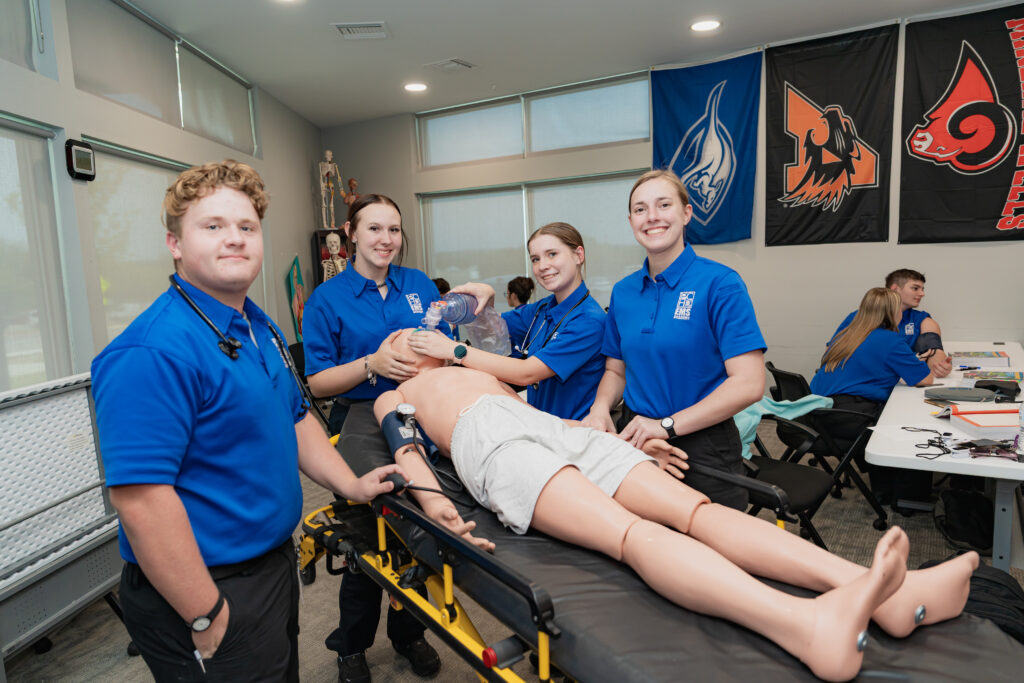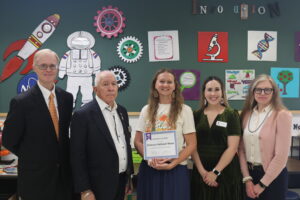When the pandemic left emergency medical services (EMS) across Texas struggling with staffing shortages, Jim Backus, Department Director of Parker County Hospital District EMS, saw both a challenge and an opportunity.
Backus had long partnered with local Career and Technical Education (CTE) programs in Aledo and Weatherford, allowing high school students to shadow medics and observe ambulance ride-outs. But he wondered: What if students could do more than observe? What if they could graduate high school with real-world certifications and a head start on a career in medicine?
That idea became the foundation for the Parker County EMS Academy, a program training high school seniors to become certified Emergency Medical Technicians (EMTs) or dispatchers before graduation.
From Idea to Impact
“When COVID hit, EMS took a big hit,” Backus explained. “Many retired, others left the field, and we knew we had to rebuild our numbers. At the same time, I looked at these high school kids and thought—this could be a great opportunity for them.”
Accepted students spend their senior year balancing classroom instruction with ambulance ride-outs and hands-on training at Parker County’s EMS headquarters in Weatherford. By the end of the year, they are eligible to sit for the national EMT exam. Those who pass graduate with a certification that can lead directly to jobs starting at about $60,000 per year.
“Compare that to fast food or retail jobs,” Backus said. “This program gives them a real career path—many of our graduates use it to pay for college and come out debt-free, just like I did.”
A School’s Perspective
At Mineral Wells High School, the EMS Academy has become a key addition to its health science pathway. Deeann Hampton, the school’s CTE Director, explained that students must already be enrolled in health science courses to apply.
“We don’t open it up to everyone, only because it is hard,” Hampton said. “Having some background in medical terminology helps them be more successful.”
Mineral Wells was among the first schools to join when the academy launched during the pandemic. Hampton credits Backus and his team for making the model sustainable. “Most schools only had a handful of interested students, so it made sense to centralize the program at their facility. Now, it’s grown so much they run two sessions a day.”
For her students, the experience has been transformative. One graduate passed the EMT exam on her first try and immediately found weekend work while attending college full time. Another entered paramedic school. Others have taken flexible event and sports assignments to earn money while pursuing degrees.
“At first, they’re stressed out because it is adult-level content,” Hampton said. “But once they find their rhythm, they start to shine. You just watch them grow as individuals.”
More Than a Job
The academy prepares students not just for paychecks but for responsibility. They learn medical terminology, patient care, and professional communication while gaining confidence alongside seasoned medics.
“They learn to interview patients, communicate with families, and handle stressful situations,” Backus said. “By the end of the year, they’ve grown tremendously in confidence and maturity.”
Some graduates pursue nursing or paramedic school, while others enter the workforce immediately – filling critical EMS roles in rural communities that struggle with staffing shortages.
Expanding Opportunities
While the EMS Academy started small, it has grown rapidly. The program began with just seven students three years ago. Nearly 40 students are expected next year, representing Mineral Wells, Springtown, Aledo, Weatherford, private schools, and others.
In addition to EMT training, the academy now offers a dispatch program. Juniors practice with a simulated console powered by AI, while seniors can earn certification and handle low-acuity 911 calls under supervision. Many step into full-time dispatcher roles starting at $50,000 annually.
“Our dispatch department used to struggle with vacancies,” Backus said. “Now, we’ve got a steady pipeline of trained, motivated young people.”
Powered by Partnerships
The academy thrives thanks to partnerships with local school districts and federal grant support. A Substance Abuse and Mental Health Services Administration (SAMHSA) grant reduced what could have been a $3,000 college-level course to just $500 per student.
At Mineral Wells, Hampton said families contribute that fee as a “buy-in.” “We’ve found they’re more successful when they have a little skin in the game,” she said.
Because Parker County Hospital District is a public entity rather than a for-profit college, the program focuses on accessibility rather than revenue. Students learn from active paramedics and physicians, ensuring practical, real-world instruction.
Preparing for the Future
The EMS Academy has proven to be a win-win: communities gain skilled first responders, and students graduate with career-ready credentials.
“Every town needs EMS,” Backus said. “With this program, students can graduate high school, start good-paying careers, or use it as a steppingstone to nursing, paramedicine, or even medical school. It’s exciting to see how far they can go.”
Hampton agreed. “They’re walking out at 18 years old with a job where they can make a living, while other kids their age still don’t know what they want to do,” she said. “It’s just an amazing opportunity.”











